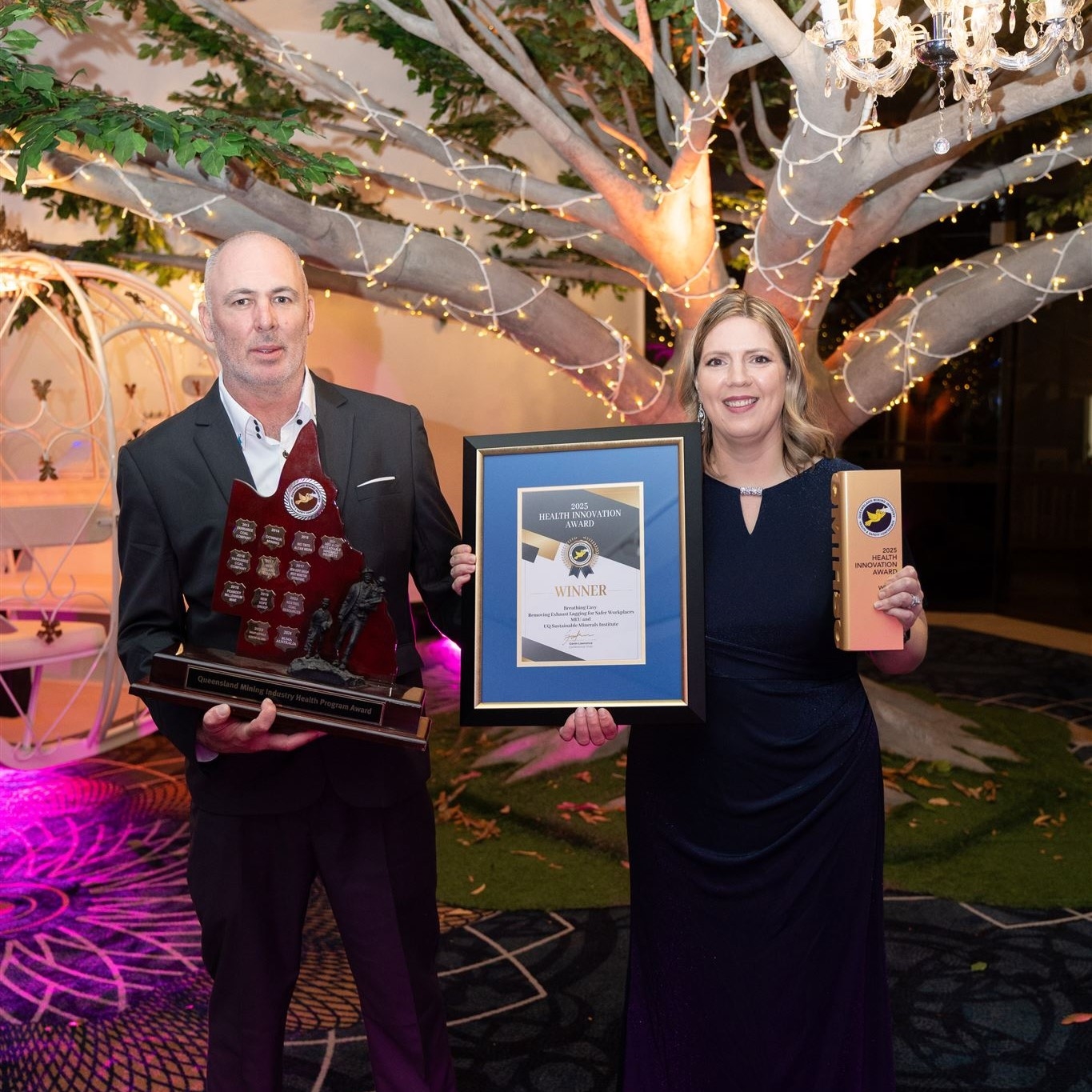Dust may look harmless to the naked eye, but under an electron microscope it tells a very different story. Some of the smallest particles – including those from welding and diesel fumes– are invisible to current characterisation methods but can penetrate deep into the lungs, carrying big health risks for mine workers.
Thanks to a recently awarded $656,100 Prevention grant from the NSW Dust Diseases Board, (administered through icare NSW), Dr Nikky LaBranche, a Minerals Industry Safety and Health Centre (MISHC) Research Fellow at The University of Queensland’s Sustainable Minerals Institute, will lead a new project to take dust characterisation to the smallest scale yet.
Dr LaBranche explained that current automated mineralogy systems, such as the Mineral Liberation Analyser (MLA), can detect particles down to 0.63 microns (about 1% the size of a grain of sand), capturing many larger hazards but missing the smallest and potentially most dangerous.
As of 2025, 685 mine workers in Queensland have been diagnosed with mine dust lung diseases and the number of cases being diagnosed continues to sky-rocket.
“This project will allow us to recognise those smaller particles in dust – including submicron welding fume and nanoscale diesel particulate – and help us measure those fractions that carry very little mass but can pose a big hazard to workers’ health,” Dr LaBranche said.

Research with direct impact is filling a critical gap
The new two-and-a-half-year project will address critical gaps in understanding the health risks associated with mineral dusts. It will focus on respirable crystalline silica, coal dust, diesel particulate matter, aluminosilicates and welding fume – all materials whose contributions to lung disease are not fully understood.
Professor Nick Cook, a geologist and collaborator on the project explained that the proportion of certain minerals that can cause health problems isn’t the same as how common those particles are in the rock found on mine sites.
“More complete knowledge about the size, shape, surface area and mineral composition of dust particles will help companies and regulators to improve dust controls and minimise health risks,” The team has already started to use Field Emission Gun (FEG) microscopes for high-resolution imaging, but this will be the first dust project to fully utilise the FEG-SEM machines and take the group’s dust measurement abilities to a new level.
“We’ve become very good at getting useful information out of rocks by looking at them in finer and finer detail… this breakthrough will provide the ability to map, measure and classify particles that may have slipped past existing analytical systems,” Professor Cook said.

Prevention through collaboration
One recent example of Dr LaBranche’s focus on proactive prevention was a collaboration with a diesel fitter and Site Safety and Health Representative, Scott Anderson, which helped identify potential health hazards associated with the use of exhaust thermal insulation blankets (a type of thermal insulation used on diesel engines to manage heat that can degrade over time and release hazardous fibres).
In August, Mr Anderson and Dr LaBranche won the Queensland Mining Industry Healthand Safety Conference Health Innovation Award 2025 for their role in starting to remove this hazard from mines. She also winner of the Exceptional Woman in Technological Innovation Award at the 2025 Women in Resources National Awards and was a finalist in the Australian Financial Review Higher Education Awards for Emerging Leadership (2025).
SMI Director Professor Rick Valenta said the project exemplifies the Institute’s mission to deliver research with real-world benefits.
“Dr LaBranche is one of our growing number of early career researchers who are making an impact on the global stage and we’re very proud that her research is being recognised in this way,” he said.



